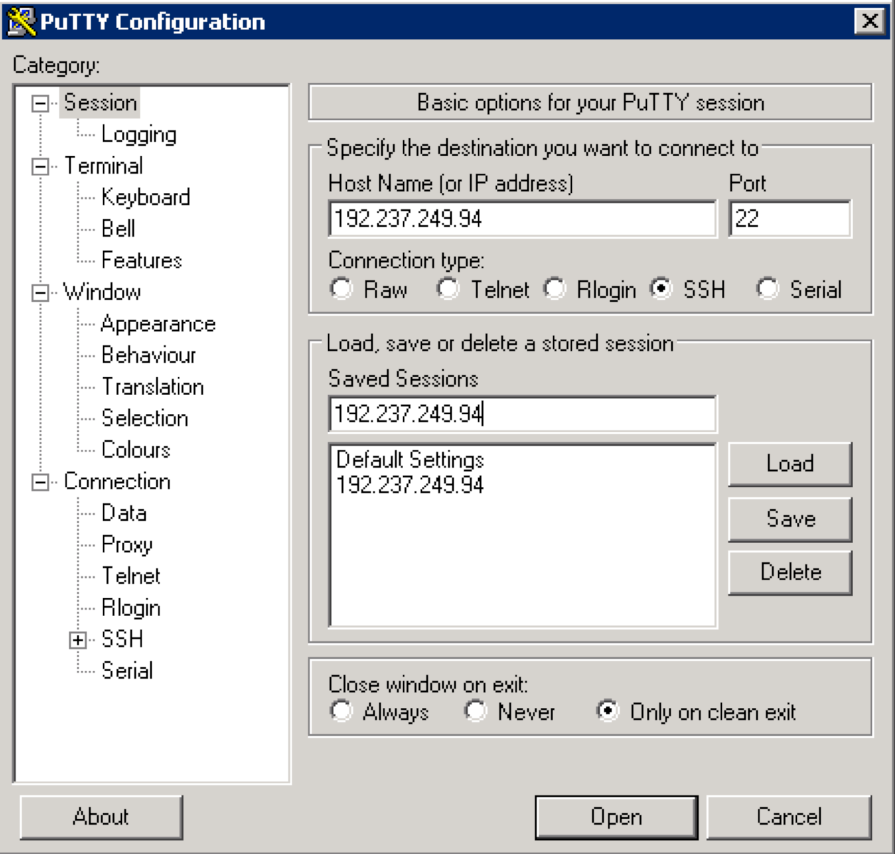How To Create Ssh Key Putty
Contents PuTTYgen download and installPuTTYgen is normally installed as part of the normal PuTTY.msipackage installation. There is no need for a separate PuTTYgen download.
- Generate Ssh Key Windows Command Line
- How To Create Ssh Key Putty Key
- How To Create Ssh File With No Extension
Generate Ssh Key Windows Command Line
For detailed installation instructions, see. Running PuTTYgenGo to Windows Start menu → All Programs → PuTTY→ PuTTYgen. Creating a new key pair for authenticationTo create a new key pair, select the type of key to generate from the bottom of the screen (using SSH-2 RSA with 2048 bit key size is good for most people; another good well-known alternative is ECDSA).Then click Generate, and start moving the mouse within the Window. Putty uses mouse movements to collect randomness. The exact way you are going to move your mouse cannot be predicted by an external attacker. You may need to move the mouse for some time, depending on the size of your key. As you move it, the green progress bar should advance.Once the progress bar becomes full, the actual key generation computation takes place.

This may take from several seconds to several minutes. When complete, the public keyshould appear in the Window. You can now specify a for the key.You should save at least the private key by clicking Save private key. It may be advisable to also save the public key, though it can be later regenerated by loading the private key (by clicking Load).We strongly recommended using a passphrase be for private key files intended for interactive use.
How To Create Ssh Key Putty Key
If keys are needed for automation (e.g., with, then they may be left without a passphrase. Installing the public key as an authorized key on a serverWith both and servers, access to an account is granted by adding the public key to a file on the server.To install the public key, Log into the server, edit the authorizedkeys file with your favorite editor, and cut-and-paste the public key output by the above command to the authorizedkeys file. Save the file. Configure PuTTY to use your private key file (here keyfile.ppk). Then test if login works. Managing SSH keysIn larger organizations, the number of SSH keys on servers and clients can easily grow to tens of thousands, in some cases to millions of keys. In large quantities, SSH keys can become a massive security risk and they can violate compliance requirements.can manage PuTTY keys in addition to OpenSSH and Tectia keys.
It works with legacy keys on traditional servers as well as dynamic andkeyless elastic environments in the cloud. Any larger organization should ensure they have proper provisioning and termination processes for SSH keys as part of their Identify and Access Management (IAM) practice. Changing the passphase of a keyIt is recommended that all SSH keys be regenerated and changed periodically. The Universal SSH Key Manager can automate this. Just changing the passphrase is no substitute, but it is better than nothing.
How To Create Ssh File With No Extension

These instructions can also be used to add a passphrase to a key that was created without one.To change the passphrase, click on Load to load an existing key, then enter a new passphrase, and click Save private key to save the private key with the new passphrase. Be sure to properly destroy and wipe the old key file. Creating a new file with a new passphrase will not help if the old file remains available.
Videos illustrating use of PuTTYgen Using PuTTYgen to generate an SSH keyHow to set up PuTTY SSH keys for passwordless logins using Pagent.